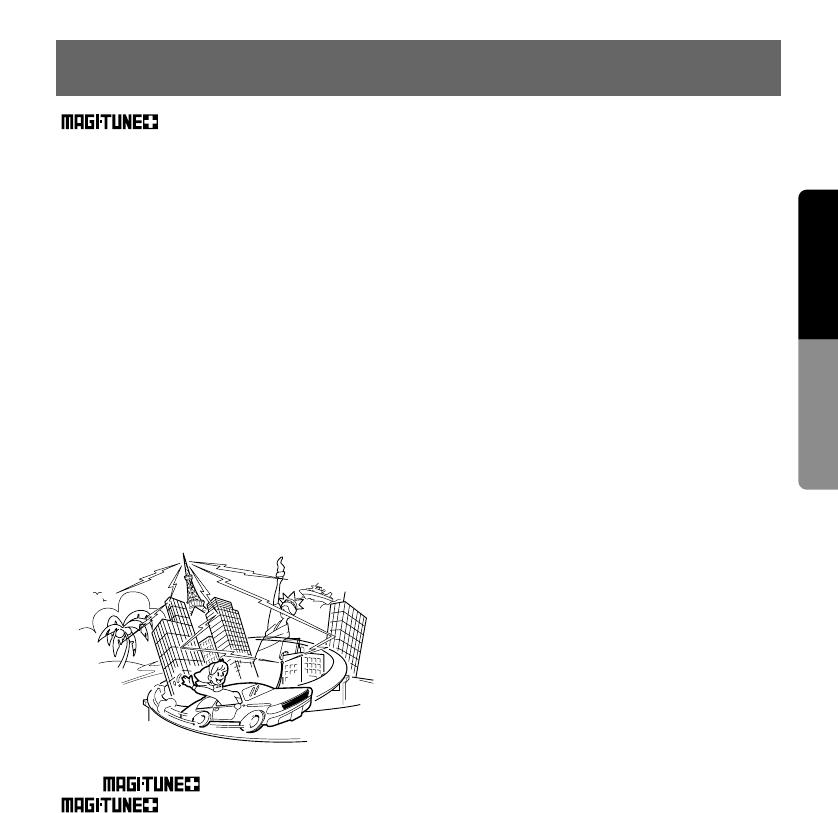
31
English
Owner’s Guide
®
TUNER
Understanding the Difficulties of
FM Reception in Your Car
FM radio waves are transmitted in the very high
frequency range (VHF). These waves move in
straight lines, much like light. Tall buildings, hills
and mountains, or other obstructions may cause
“shadows” or loss of signal, noted by a momen-
tary “hissing” noise in the reception.
These obstructions found in day-to-day urban
travel can reflect or bounce the signal. When
reflected and direct signals arrive at the radio’s
antenna together, a similar noise problem may
occur, called multi-path interference.
In addition, the vehicle itself can be the culprit,
creating various types of impulse noise (usually
associated with the vehicle’s ignition and/or
other parts of the electrical system), which again
will deteriorate signal quality.
The
®
AM/FM Tuner
®
combines both AM and FM
tuners into one small, unique package. The
design incorporates many advanced technolo-
gies exclusively engineered to improve FM and
AM performance.
Signal Actuated Stereo Control
(SASC)
In weak signal conditions, the SASC circuit will
provide optimum, low noise reception. As the
signal weakens, stereo separation is smoothly
converted to a monaural signal with a gradual
“cut-back” on high frequency reproduction, mini-
mizing “hiss” and noise.
Balanced Mixer FM Front-End –
Dual-Gate FET
The balanced mixer pre-amp section is designed
to provide a uniform signal to the tuner – creat-
ing the best possible noise-free reception. A
variable gain stage automatically controls the
amplitude of the signal according to the incom-
ing signal strength. As the signal deteriorates or
weakens, the gain is “increased” to ensure the
highest quality signal with the least amount of
noise. When signal strength becomes very
strong, the gain is reduced, avoiding unneces-
sary distortion.
Triple Stage Narrow Band IF Filters
The new triple stage IF and ceramic filter system
enables the tuner to “focus” on the selected fre-
quency – ignoring stronger or nearer stations to
prevent frequency “hopping.” With this type of
narrow band filtering, the selectivity of the tuner
can be increased.
10. FM RECEPTION


















